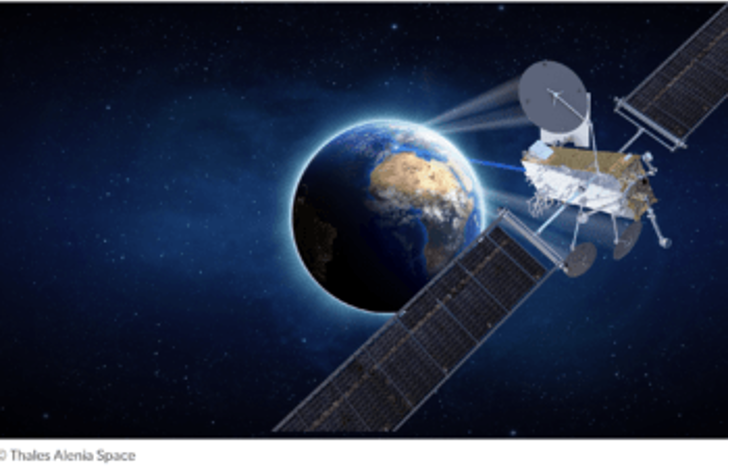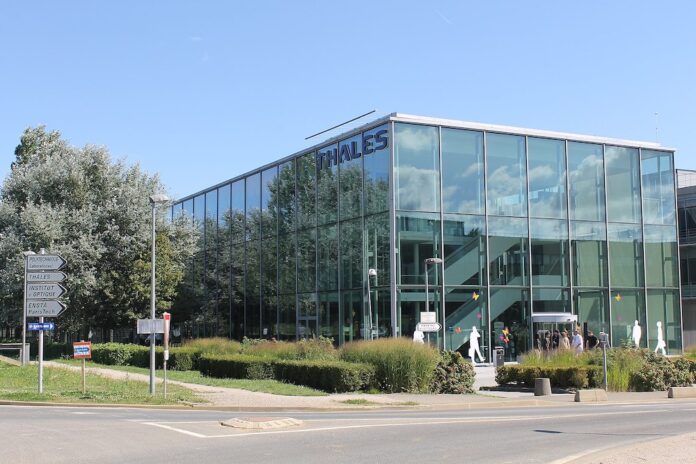97W optics smash speed record
The Thales laboratory in Palaiseau, France (pictured) has made history for creating a high-power optical data transmission system that ran the EU Vertigo (Very High Throughput Satellite-Ground Optical link) project at 25 Gbps. Engineers from Thales Alenia Space, Thales, G&H and Leo Space Photonics R&D showed that the generation and transmission of optical comms signals can speed data at 25 Gbps in a controlled environment at a record-breaking optical power of 97W which puts 100W-class transmissions within reach. This latest breakthrough s vital as it proves that both high power, longevity and high integrity are all simultaneously achievable.
This was all achieved by splitting a modulated optical signal into two paths, each amplified through an individual state-of-the-art G&H high power amplifier, then coherently combining the two amplifier outputs. The participants grabbed the chance to show how high and very high optical power generation works and prove to doubters that it is possible to transmit telecom signals at very high power while maintaining data integrity. Both high power and data integrity are compulsory conditions before free-space optical links cab be contemplated over long distances.
Previously, in summer of 2022, outdoor trials of free-space optical links achieved a record transmission at 1 Tbps over an atmospheric optical path of 53 km. However, the new lab test campaign performed in Thales facilities gives the Vertigo project a new record on a different set of parameters, since it proves that future geostationary communication satellites using optical feeder links are feasible.
Following on from this latest development in the Vertigo project, the next step will be to target a full-scale coherent laser link between a geostationary satellite at an altitude around 36.000 km and a ground station. Vertigo is an H2020 collaborative project funded by the EU, launched on June 1st 2019 and completed at the beginning of 2023. The project consortium was composed of Creonic, ETH Zürich, Fraunhofer HHI, G&H, Leo Space Photonics R&D, ONERA, Thales Alenia Space in France and Switzerland and Thales Research & Technology.

Thales Alenia Space claims to have 40 years of experience to complement skills, expertise and cultures in telecoms. It sells its navigation, Earth observation, environmental management, exploration, science and orbital infrastructures to governments and private industry. It design satellite-based systems that provide anytime, anywhere connections and positioning, monitor our planet, enhance management of its resources, and explore our Solar System and beyond. A joint venture between Thales (67%) and Leonardo (33%), Thales Alenia Space is currently working with Telespazio to form the parent companies’ Space Alliance, which offers a complete range of services. Thales Alenia Space posted consolidated revenues of approximately €2.2 billion in 2022 and has around 8,500 employees in 10 countries with 17 sites in Europe and a plant in the US.


